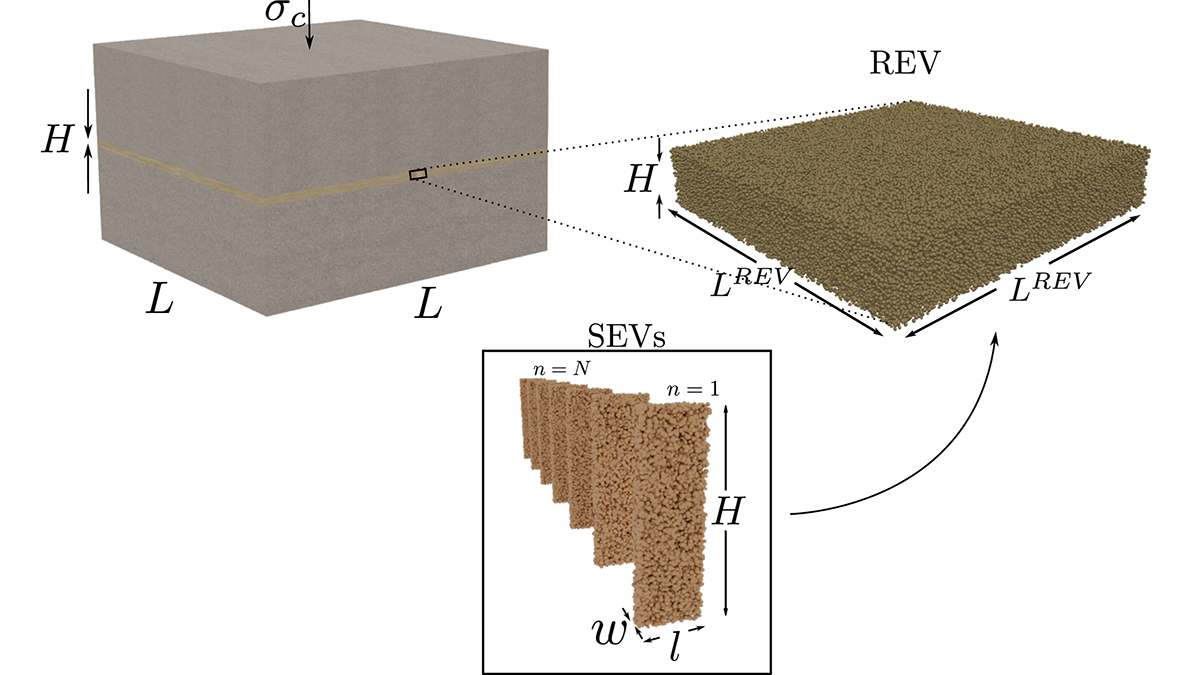Editors’ Highlights are summaries of recent papers by AGU’s journal editors.
Source: Journal of Geophysical Research: Solid Earth
How the imbricated length scales of deformation, from the grains to the entire fault core, control friction and fault slip remains enigmatic. Papachristos et al. [2023] present a thorough analysis of stick-slip phenomena in simulated sheared gouges. The analysis specifically inspects the role of the mean grain size and grain poly-dispersity on the peak and residual friction coefficients of the gouge, which are different due to moment resistance at particle contacts caused by their non-spherical particle shapes.
Unlike previous conclusions based on discrete element simulations, the authors carefully distinguish noisy stochastic motions at the grain scale in small samples from global stick-slip motion at the fault core scale, the latter being the one which could be related to earthquakes. This important distinction has not been properly considered in the past; instead, many studies have placed significance on the noisy motions, considering those to be the relevant ones to earthquakes. On the one hand, thanks to ergodic averaging of larger samples, the authors show that the noise vanishes for long faults. On the other hand, the global stick-slip strain softening remains, which is readily shown to scale with mean grain size but not with the width of the grain distribution.
Citation: Papachristos, E., Stefanou, I., & Sulem, J. (2023). A discrete elements study of the frictional behavior of fault gouges. Journal of Geophysical Research: Solid Earth, 128, e2022JB025209. https://doi.org/10.1029/2022JB025209
—François Renard, Associate Editor, JGR: Solid Earth

